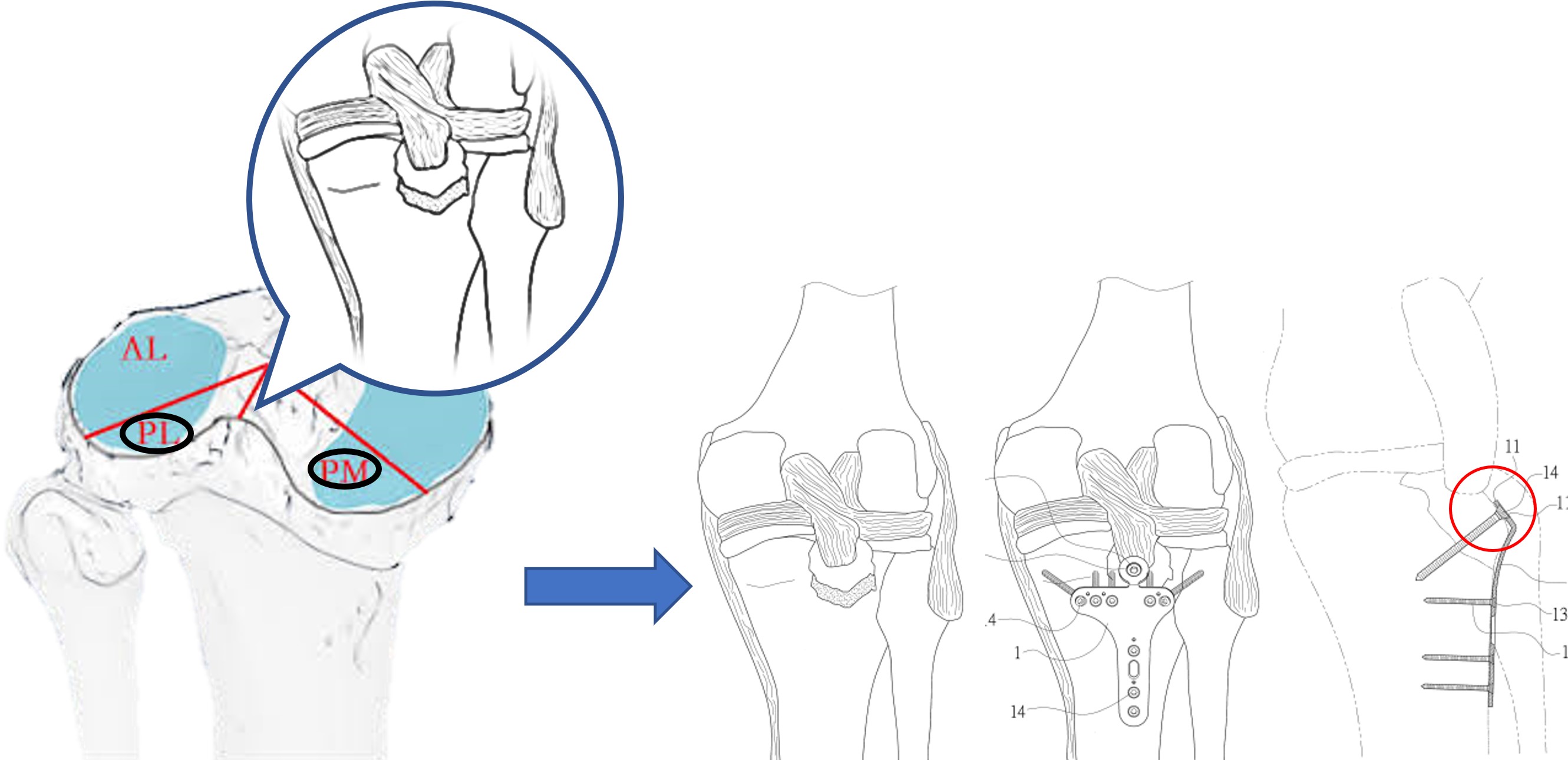Introduction
Finite element method can be utilized to calculate internal stress without affecting the bone and its surrounding tissues. Finite element method has been used in many orthopedic studies concerning complex geometry, nonlinear material properties, and complex contact behaviors. This study is done to create better bone implant for differing fractures by studying the internal stress and strain while considering the poroelasticity and viscoelasticity of the model. We utilized computational analysis using finite element method to compare fixating stability of different geometries of implant for posterior tibial plateau fracture with, or without, a concomitant posterior cruciate ligament avulsion fracture. The parameters used to define the fixating stability of the implant includes displacement of bone fracture fragment and stress distribution on the implant. Cadaver studies are used as validation data.

Figure 1.